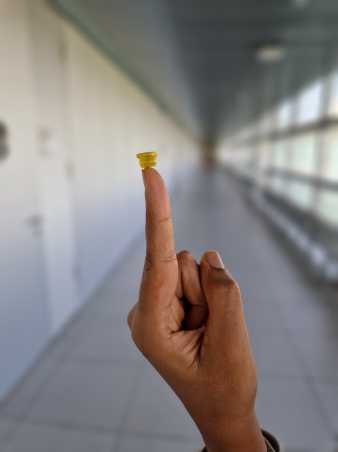Many of today’s medications belong to groups of relatively large molecules such as peptides. They are used to treat a wide range of diseases, including diabetes, obesity and prostate cancer. Unfortunately, taking these medications in tablet form is out of the question in most cases because they would break down in the digestive tract or remain too large to reach the bloodstream. Consequently, the patient’s only option is to receive their medication via injection.
A group of researchers at ETH Zurich have developed a suction cup capable of delivering medications comprising large molecules like peptides to the bloodstream via the mucosal lining of the cheek. The group is led by David Klein Cerrejon and Nevena Paunović, both of whom work at the Chair of Drug Formulation & Delivery headed by Jean-Christophe Leroux.
“It’s an entirely new method of delivering medications that could spare millions of people the fear and pain associated with injections,” says Paunović, who has received one of ETH Zurich’s coveted Pioneer Fellowships. Her aim is to bring the suction cup to market through the start-up Transire Bio.
Breaking through the cheek’s mucosal lining
The mucosal lining of the cheek isn’t particularly suitable for delivering medication to the bloodstream. Its dense tissue has so far presented a major obstacle, especially for large molecules like peptides. But the ETH researchers are now about to change this with their suction cup.
Patients press the suction cup – which measures around ten millimetres in diameter and six millimetres in height – onto the lining of their cheek with two fingers. This produces a vacuum that stretches the lining, making it more permeable to the drug contained within the cup’s dome-shaped hollow. But that alone isn’t enough for the drug to reach the blood vessels.
The researchers have thus supplemented the drug with an endogenous agent that fluidises the cell membranes, allowing the drug to penetrate to the deeper layers of tissue. Patients are advised to keep the suction cup on the inside of their cheek for a few minutes. That’s enough time for the drug to dissolve in saliva and enter their bloodstream directly via the now permeable mucosal lining.







Comments
No comments yet